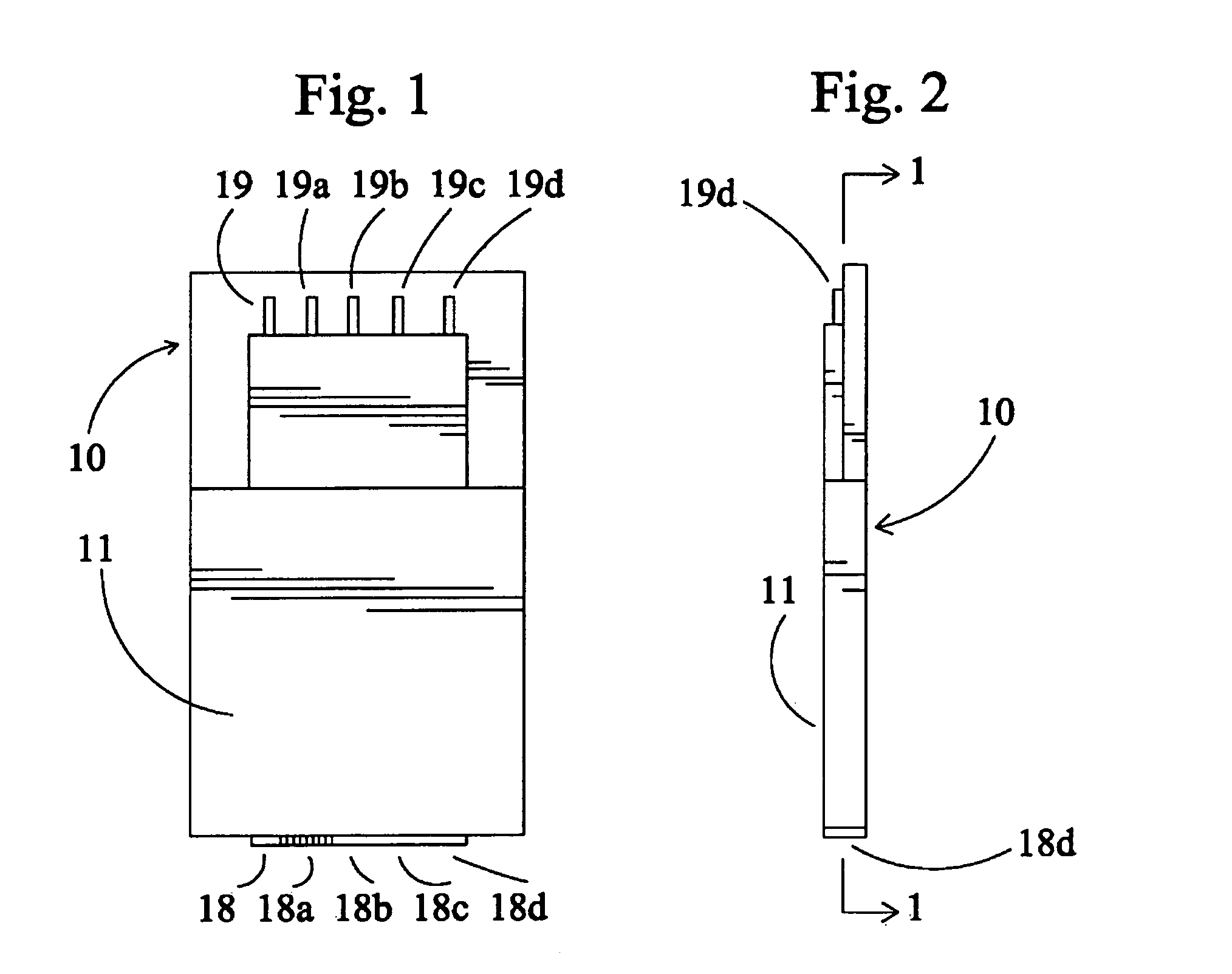Extruded connector without channel insulating layer
a technology of insulating layer and connector, which is applied in the direction of contact members penetrating/cutting insulation/cable strands, instruments, optical elements, etc., can solve the problems of physical size requirements, increased signal density, and inability to offer a large number of contacts,
- Summary
- Abstract
- Description
- Claims
- Application Information
AI Technical Summary
Benefits of technology
Problems solved by technology
Method used
Image
Examples
Embodiment Construction
[0029]The present invention pertains to electrical connectors, and in particular, includes an extruded metallic electrical connector assembly having an extruded metallic housing with channels that do not require an insulating layer and / or an IPCB.
[0030]As shown in the Figures, the extruded electrical connector assembly 10 (FIG. 1) provides a four-sided metal enclosure along the length of individual contacts, for high-density low-inductance, resistance and good signal integrity. This means and method of shielding each individual contact along the contact's length by the connector housing 11 (FIG. 4) contiguously extruded from metal to form individual channels 12, 12a, 12b, 12c and 12d (FIG. 3) to house each contact providing multiple cavities. As shown in FIG. 7, the connector assembly is attached to a motherboard, thereby eliminating the need for an IPCB as part of the embodiment.
[0031]In an example embodiment, the contacts are on centers of 2 mm or less. In an example embodiment, t...
PUM
 Login to View More
Login to View More Abstract
Description
Claims
Application Information
 Login to View More
Login to View More - R&D
- Intellectual Property
- Life Sciences
- Materials
- Tech Scout
- Unparalleled Data Quality
- Higher Quality Content
- 60% Fewer Hallucinations
Browse by: Latest US Patents, China's latest patents, Technical Efficacy Thesaurus, Application Domain, Technology Topic, Popular Technical Reports.
© 2025 PatSnap. All rights reserved.Legal|Privacy policy|Modern Slavery Act Transparency Statement|Sitemap|About US| Contact US: help@patsnap.com



